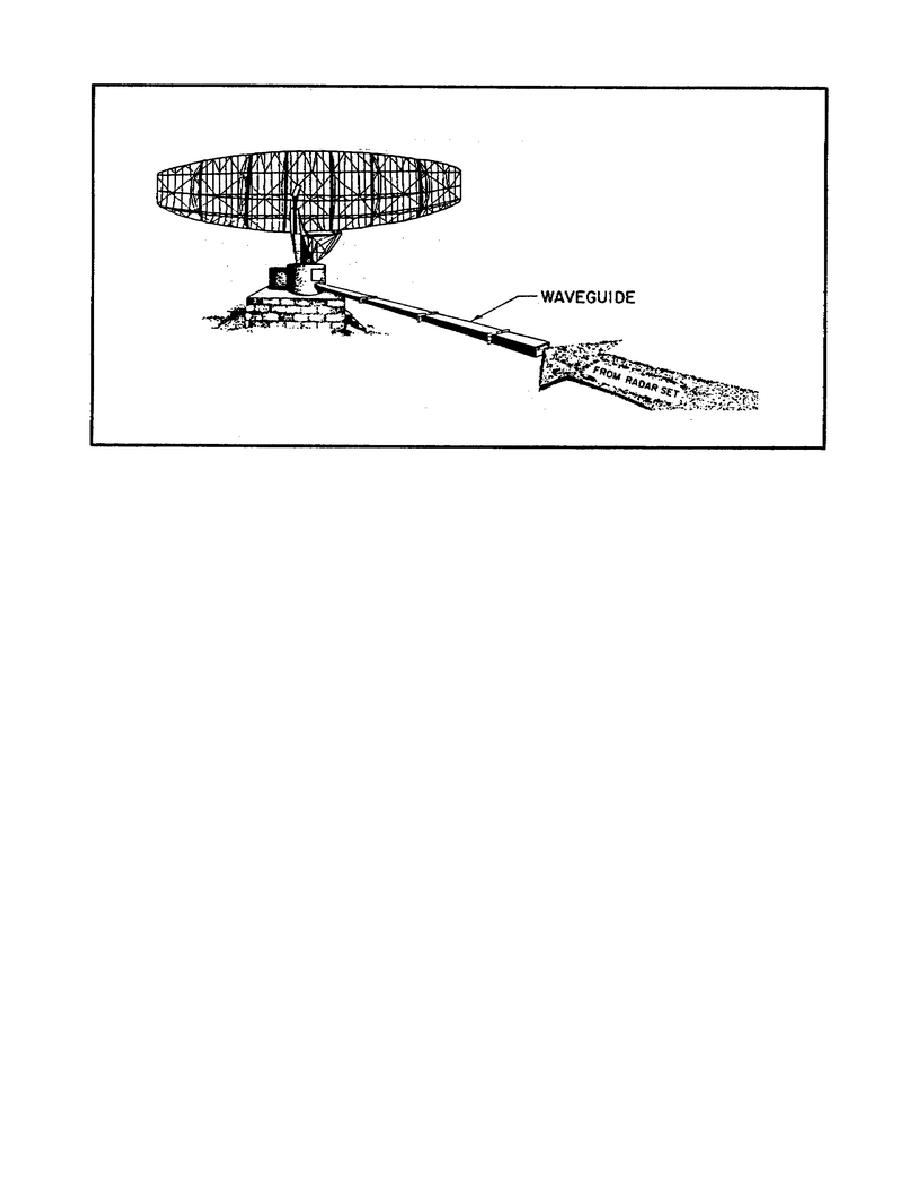
Figure 105. Typical Waveguide.
2.
Why call it waveguide?
a. You know that we transfer electrical energy in different ways. For
example, we use a copper wire to provide a path for DC and low-frequency AC.
Similarly, we use an RF transmission line to provide a path for frequencies
above 20 kilohertz.
Both the copper wire and the transmission line are
designed to transfer or guide the electrical energy with a minimum loss of
power.
b. When transferring energy from one place to another, power loss goes
up as the applied frequency rises.
For this reason, DC is easily
transferred from one place to another with very little loss.
Even low-
frequency AC is easily transferred with very little loss of energy.
But
power losses are especially important at UHF frequencies and above. That's
why we use special types of RF transmission lines such as open two-wire
line, flexible coaxial line, and rigid coaxial line.
c. Actually, all types of transmission lines, wires, or conductors are
used to guide energy. We usually think of this energy in terms of voltage
and current.
At microwave frequencies, however, the wavelengths are so
small that we speak in terms of waves instead of voltage and current. So,
at the microwave frequencies, we speak of guiding the wave. Thus, we get
the term waveguide.
3.
What is waveguide?
a. Waveguide is a hollow, round or rectangular pipe, of specific
dimensions.
It is the most efficient means we have of transferring or
guiding RF energy.
159



 Previous Page
Previous Page
